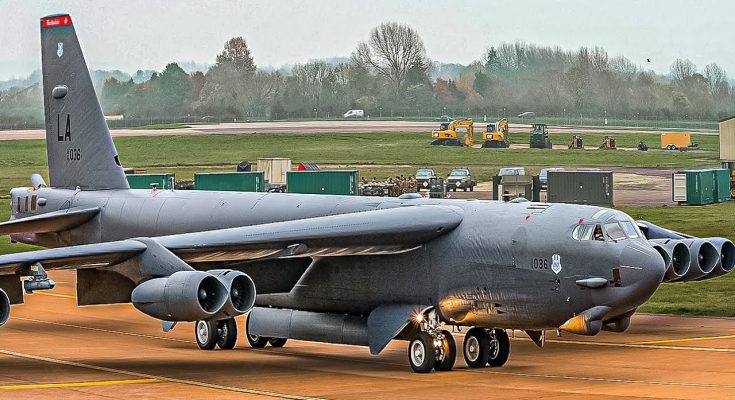Complete Mission Operations of the U.S. Air Force B-52H Stratofortress Heavy Bomber
The B-52H Stratofortress, a long-range, subsonic strategic bomber operated by the U.S. Air Force Global Strike Command, remains a critical pillar of American airpower. Introduced in the 1950s and still going strong today, the B-52’s enduring relevance stems from its unmatched range, payload, and mission versatility. With the ability to fly 8,800 miles unrefueled, carry 70,000 pounds of mixed ordnance, and conduct nuclear and conventional missions, the B-52H is a global force projection platform unlike any other.
Mission Profile and Capabilities
B-52H mission operations begin with in-depth pre-mission planning. Crews analyze target data, threat assessments, air refueling tracks, and route navigation. Integrated with systems like the Air Operations Center (AOC), these missions can support global strike, close air support, maritime interdiction, and strategic deterrence.
The Stratofortress is equipped with advanced communications, electronic countermeasures, and precision weapons targeting. Its primary missions include:
-
Global Strike Operations: Conducting long-range precision bombing missions anywhere in the world, often from CONUS bases like Barksdale AFB or Minot AFB.
-
Nuclear Deterrence: As part of the nuclear triad, the B-52H can deliver nuclear cruise missiles like the AGM-86B ALCM, supporting continuous deterrence postures.
-
Conventional Bombing: Capable of deploying a full range of JDAMs, unguided bombs, and AGM-158 JASSM standoff weapons.
-
Maritime Operations: Armed with Harpoon anti-ship missiles, the B-52H can engage enemy naval assets during maritime interdiction missions.
Flight Operations
A standard mission involves a crew of five airmen: aircraft commander, co-pilot, radar navigator, navigator, and electronic warfare officer (EWO). After takeoff, missions often involve air-to-air refueling from KC-135 or KC-46 tankers, extending the bomber’s global reach without landing.
Once on station, the B-52H can loiter for extended durations, thanks to its fuel efficiency and crew endurance capabilities. In combat scenarios, bombers remain under airborne command and control, adjusting strike packages in real time using secure data links and targeting updates.
Precision Engagement and Payload Delivery
The B-52H can launch precision-guided munitions from standoff ranges, reducing its exposure to enemy air defenses. With the Combat Network Communications Technology (CONECT) upgrade, crews can receive updated targeting data mid-flight, enhancing responsiveness.
Payload options include:
-
AGM-86B ALCM (nuclear)
-
AGM-158 JASSM/JASSM-ER
-
GBU-31/38 JDAMs
-
Mk-82/84 unguided bombs
-
Mines and cluster munitions (as required)
Strategic Presence and Global Integration
The B-52H regularly deploys under Bomber Task Force (BTF) missions to the Indo-Pacific, Europe, and Middle East, demonstrating global reach and allied integration. It also participates in large-scale exercises like Global Thunder, Red Flag, and Valiant Shield, integrating with 5th-gen aircraft, allied forces, and joint terminal attack controllers (JTACs) on the ground.
Enduring Legacy, Modernized Future
Despite being over 60 years old, the B-52H is continuously modernized. New Rolls-Royce F130 engines, AESA radar upgrades, and advanced weapons integration will keep the bomber relevant well into the 2050s.
From Cold War sentinel to 21st-century strike platform, the B-52H Stratofortress is proof that with the right upgrades and mission flexibility, true airpower never goes out of style.



